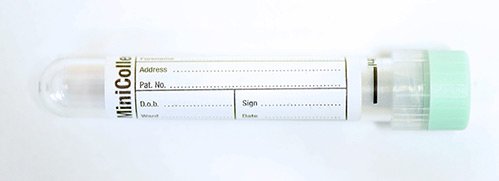Albumin
Clinical Biochemistry
Background Information
- Albumin is included in both the liver function test profile and bone profile, and is used to calculate the adjusted calcium level.
- Albumin is the most abundant plasma protein and is synthesised and secreted by the liver.
- High albumin levels may occur due to dehydration or certain drugs, such as steroids and insulin. Increases in blood proteins will also be caused by prolonged application of a tourniquet.
- Low albumin levels may have many causes, including decreased synthesis by the liver (due to liver disease, malnutrition or malabsorption conditions, such as Crohn’s disease), the acute phase response (the body’s physiological response during trauma, burns, infection and inflammation) and abnormal excretion or degradation of albumin (for example, due to nephrotic syndrome or haemorrhage).
- This laboratory uses the bromocresol purple method (BCP) which is more specific than the bromocresol green (BCG) method. Consequently, lower albumin results are to be expected on samples assayed by this laboratory compared to those assayed in other laboratories which use the BCG method. The effect is insignificant if the albumin is within normal limits but is most noticeable at low albumin levels or abnormal globulin levels.
Patient Preparation
No specific preparation required
Sample Requirements
For adults, blood taken into a 5mL gold top gel tube (or rust top for the Acute Unit)

For children, blood taken into a 3.5mL rust top tube

For neonates, blood taken into a 0.8mL minicollect lithium heparin tube.

Storage/Transport
Send at ambient temperature to the laboratory. If unavoidable, samples can be stored refrigerated overnight.
Required Information
Relevant clinical details including known or possible diagnoses and any fluid replacement.
Turnaround Times
The assays are run throughout the day and night. The in-lab turnaround time is normally less than 24 hours. The test can be ordered as an urgent request.
Reference Ranges
| Age | Reference range (g/L) | |
|---|---|---|
| 0 - 1 years | 30 - 45 | |
| 1 - 16 years | 30 - 50 | |
| >16 years | 35 - 50 |
Further Information
To learn more about albumin, visit Lab Tests Online.
Page last updated: 29/10/2025 | Page last reviewed: 29/10/2025